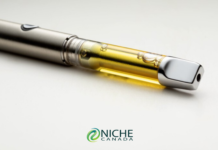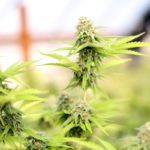The latest data released by Statistics Canada suggests the number of new cannabis users is on the rise.
In all, about 5.3 million or 18% of Canadians aged 15 years and older reported using cannabis in the last three months, according to data released on May 2. That’s higher than the 14% who reported using just one year earlier, before legalization.
“The increase in cannabis use between the first quarters of 2018 and 2019 can be partly explained by greater use among males and people aged 45 to 64,” according to Stats Can. “For example, rates of cannabis consumption for males increased from 16% to 22% over this period, while rates rose from 9% to 14% for persons aged 45 to 64. Levels of consumption remained stable for females, at 13%, and were unchanged for persons in the other age groups (such as young people under 25 and seniors).”
At the provincial level, Stats Can found minimal change in rates of cannabis consumption between the first quarters of 2018 and 2019, with the exception of Ontario where prevalence increased from 14% to 20%.
The National Cannabis Survey (NCS), which was designed to monitor cannabis consumption and related behaviours before and after legalization, has collected data every three months since February 2018.
“Today’s release features the first Canada-wide results entirely in the post-legalization period, including changes in consumption and sources of cannabis, as well as beliefs about when it is safe to drive after using,” states Statistics Canada.
Number of new cannabis users increasing
The survey found more Canadians began to use cannabis in the first quarter of 2019. Some of these new cannabis consumers were first-time users, while others were former cannabis users who tried cannabis again post-legalization.
During the first quarter, 646,000 cannabis users reported trying cannabis for the very first time in the past three months. This number of first-time users was nearly double the corresponding estimate of 327,000 people one year earlier, when non-medical cannabis use was not yet legal.
Results suggest that first-time users in the post-legalization period are older. Half of new users were aged 45 or older, while in the same period in 2018, this age group represented about one-third of new users.
Males and young Canadians remain more likely to consume cannabis
While early indications suggested an increase in cannabis use in the period immediately following legalization, many other aspects of cannabis use appear to be unchanged. For example, cannabis use continued to be higher among males (22%) than females (13%). Use also remained more common among 15- to 24-year-olds (30%) than among people aged 25 and older (16%).
More cannabis users report obtaining cannabis from legal sources; fewer from illegal sources
Initial NCS data indicates that Canadians are changing the source from which they obtain cannabis.
In the first three months of 2019, a greater proportion of users reported obtaining cannabis from legal sources compared with the first quarter of 2018. An estimated 47% of cannabis users or 2.5 million Canadians obtained cannabis from legal sources in the first three months of 2019, compared with 23% or 954,000 people over the same period in 2018, when non-medical cannabis use was not yet legal.
Examples of legal sources of cannabis include authorized retailers and online licensed producers.
Fewer users reported obtaining cannabis from illegal sources (such as a dealer) in the first three months of 2019 (38%) compared with the first quarter of 2018 (51%). A similar decrease was noted for the proportion reporting friends or family as a source (47% to 37%).
Some users obtained cannabis from multiple sources, which could have included both legal and illegal sources. During the first quarter of 2019, obtaining cannabis from multiple types of sources was more common among daily or almost daily users (33%) than among those who used occasionally (once or twice) (14%). Results also indicate that cannabis consumers who began using in the past three months were less likely to obtain cannabis from an illegal source (23%) compared with other users (40%).
Almost half of Canadians believe people should wait at least three hours to drive after using cannabis
Statistics Canada found that safety concerns remain about whether legalization of cannabis will increase incidents of cannabis-impaired driving. The main source of information on drug-impaired driving comes from official police-reported statistics.
While the NCS does not directly measure impaired driving, questions about perceptions and behaviours related to driving after cannabis use have been included in the survey to provide a fuller statistical picture of this phenomenon.
Nearly half (49%) of Canadians reported that they think an individual should wait at least three hours before operating a motor vehicle after using cannabis. A relatively small share of the population (6%) believe that it is safe to do so within three hours. The remainder of Canadians (45%) think that other factors, such as a person’s weight or the method of consumption, determine when it is safe to drive after using.
Beliefs about when it is safe to drive after consuming differed by gender and the person’s cannabis use experience. By a slim margin, males (7%) were more likely than females (5%) to think that it was safe to drive within three hours of consuming cannabis.
In addition, daily and almost daily cannabis consumers were more than twice as likely as other Canadians to believe that it was safe to drive within three hours of consuming. About 18% of daily users reported this belief, while the same was true for 7% of other current users, 5% of former users, and 4% for those who have never consumed cannabis.
Beliefs about when it is safe to drive after consuming cannabis are reflected in behaviour
Overall, 15% of cannabis users with a valid driver’s license reported driving within two hours of consuming cannabis, according to combined data from the fourth quarter of 2018 and the first quarter of 2019. This was unchanged from the first half of 2018.
“Perceptions of when it is safe to drive were linked to the likelihood of driving within two hours of consuming cannabis,” Statistics Canada reports. “Among cannabis consumers who felt it was safe to drive soon after using, 36% drove within two hours. Driving soon after cannabis consumption was far less common among those who believed driving is only safe after three hours (2%). Driving within two hours of cannabis use was also less prevalent among those who believed that other factors, such as weight and mode of consumption, should be considered in determining the capacity to drive (19%).”
An estimated 4% of (or 1.1 million) Canadians aged 15 years and older reported being a passenger in a vehicle operated by a driver who had consumed cannabis within two hours. Similar to operating a motor vehicle, getting into a vehicle with a driver who had consumed cannabis was more common among those who felt it was safe to drive within three hours of consuming cannabis (20%), compared with those who felt that at least three hours should pass (2%) or that other factors were relevant (7%).
“For the first time, it is possible to look at the co-use of alcohol with cannabis,” noted Statistics Canada. “Consuming both substances is considered to be a particularly risky combination while operating a motor vehicle. Close to 20% of those who reported driving after consuming cannabis indicated that they had also consumed alcohol. This represents about 123,000 people, or 3% of cannabis users with a valid driver’s license.”



















